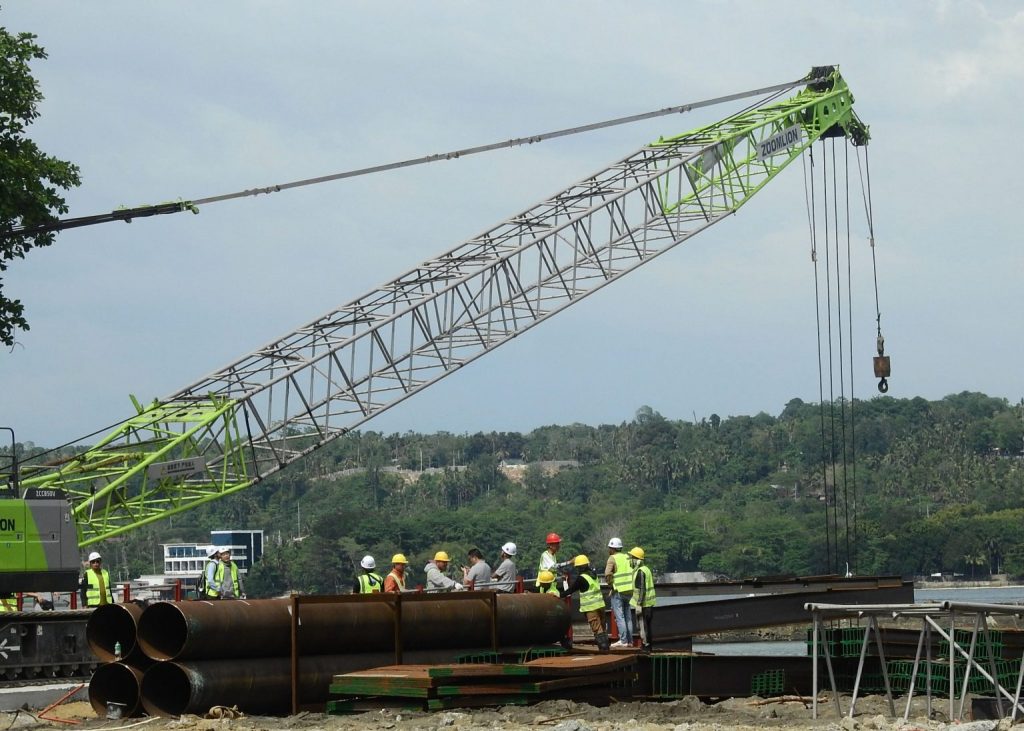
Green advocates want SC to stop Samal Bridge construction
ENVIRONMENTAL groups filed a petition for writ of kalikasan before the Supreme Court against government agencies and the contractor of the controversial P23-billion Samal Island-Davao City Connector (SIDC) Project on Monday, April 21, to avert what they deemed as an ecological time bomb.
Under the Rules of Procedure for Environmental Cases, the writ of kalikasan is “an extraordinary remedy covering environmental damage of such magnitude that will prejudice the life, health or property of inhabitants in two or more cities or provinces.”
The petition seeks to halt construction activities that are reportedly destroying two critical coral ecosystems—the Paradise Reef in Samal Island and the Hizon Marine Protected Area (MPA) in Davao City—both located in the ecologically significant Davao Gulf
The filing before the Supreme Court was done simultaneously with the press conference here at Ateneo de Davao University on Monday morning.
The groups maintained that the SIDC project involves a violation of the “constitutional right to a balanced and healthful ecology” as it results in actual, serious, and irreversible damage to the affected coral reefs.
The petitioners of the lawsuit were Ecoteneo director Carmela Marie Santos, Interfacing Development Interventions for Sustainability Inc. executive director Mark Peñalver, both representing the Sustainable Davao Movement, and Marvelous Dainty Camilo, Dyesebel Philippines Inc. chairperson.
Meanwhile, named as respondents included the Department of Public Works and Highways, represented by Sec. Manuel M. Bonoan; Department of Environment and Natural Resources, represented by Sec. Maria Antonia Yulo-Loyzaga; Samal Island Protected Landscape and Seascape Protected Area Management Board, represented by DENR XI regional executive director of Ma. Mercedes V. Dumagan; and the contractor, China Road and Bridge Corporation.
In the 9-page executive summary of the petition sent to TIMES, the grounds for the issuance of the writ was the “actual or threatened violation” of the constitutional right to a balanced and healthful ecology, including the preservation of coral reef systems.
Among the grounds included Republic Act No. 11038 (Expanded National Integrated Protected Areas System Act of 2018); Republic Act No. 9147 (Wildlife Resources Conservation and Protection Act); Davao City Ordinance No. 0861-22 (Comprehensive Land Use Plan 2019-2028); Executive Order No. 192, s. 1987 (Reorganization Act of the Department of Environment and Natural Resources); Executive Order No. 292, s. 1987, (Administrative Code of 1987); Presidential Decree No. 1586 instituting the Philippine Environment Impact Statement System and its implementing rules and regulations; and Environmental Compliance Certificate ECC-CO-2009-0014 issued for the SIDC Project.
The writ highlighted several defects and irregularities in the ECC issuance for the SIDC project leading to the destruction of coral reefs.
The petitioners stressed that DENR issued misleading statements on the vulnerability of area, such as but not limited to the characterization of the SIDC project site in Samal Island and in Davao City as environmentally critical area; status of Barangay Limao, Samal Island as a protected area; circumstances of the marine protected area in Barangay Hizon, Davao City; circumstances of the Davao Gulf as a marine key biodiversity area.
To note, on June 10, 2024, SDM debunked the claims of the Department of Public Works and Highways (DPWH) about the Samal Island-Davao Connector (SIDC) bridge project having no impact on corals and marine biology.
This followed the statement from Engr. Rodrigo Delos Reyes, DPWH Unified Project Management Office-Bridges Management Cluster (UPMO-BMC) project director, who said the construction did not record any destruction of corals.
SDM maintained that coral damage has been continuous in four major pre-construction activities that DPWH has undertaken.
According to the groups, even if the ECC was valid, the DPWH and CRBC have violated the conditions in site preparation and clearing; information education and communication program; comprehensive social development program; carbon sink program; multipartite monitoring teams, environmental guarantee fund, and environmental monitoring fund.
As a result, residents of Samal and Davao City are exposed to increased vulnerability to storm surge, contamination of groundwater and seawater, decreased fishing productivity, among others.
The petition prayed a writ of kalikasan be issued directing respondents to submit answers to the petition within 10 days from receipt.
Ecosystem at risk
Atty. Manuel Quibod, dean of AdDU College of Law, said that off-shore drilling, soil testing, and crane-way installation have contributed to the degradation of the ecosystem.
Quibod stressed that the group is not against the bridge, but only of its present alignment.
Additionally, he said the petition does not represent anti-development but a call for sustainable, legal and environmentally responsible policy that does not come at the cost of destroying irreplaceable ecosystems.
Meanwhile, Peñalver noted that studies have identified alternative alignments for the bridge that would cost less and have minimal impact on both the environment and local livelihoods.
The proposed alignment is P16-billion which is P7- billion cheaper from the current project which costs P23-billion, according to the study commissioned by the Japanese government.
As of April 11, DPWH reported that the construction of the bridge currently stands at more than 12 percent overall physical accomplishment. With reports from Aaron Christian D. Rusiana and Kisha Mica Bardago/UM Interns
